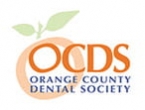Posted: January 20, 2011
Dentists are in a unique position to identify patients who are prone to sleep apnea. Many signs of sleep apnea are visible in the mouth. But first, what is sleep apnea. Typically, when a person sleeps gravity can cause the tongue to fall back in the mouth and block the airway. The sleep apneic can stop breathing for several seconds causing the patient to wake slightly in order to move the tongue and take a gasping breath. This can take place a hundred times an hour in patients with severe sleep apnea.
Imagine the toll oxygen deprivation takes on the body, not to mention all the interruptions in the stages of sleep including the REM dream stage of sleep. This oxygen deprivation throughout the night leads to several long and short term consequences. Long term health consequences of patients with untreated sleep apnea are heart attack, stroke, high blood pressure and diabetes. Medical studies have shown a person suffering from sleep apnea is 23 times more likely to have a heart attack than a person without sleep apnea. Short term effects include excessive daytime sleepiness, automobile accidents, a lack of the ability to concentrate, and difficulties with libido.
Several indicators of sleep apnea are visible by your dentist. These include narrow, crooked dental arch and teeth, teeth indentations on the sides of the tongue, a high vaulted palate, a large tongue or tonsils, and a recessed chin. These indicators of sleep apnea combined with a large neck (over 17 inches in men, 16 inches in women), and a high body mass index (BMI) are over 97% predictive of sleep apnea.
If a dentist suspects a patient may have sleep apnea, they should be referred to a board certified sleep physician in the area for a sleep study. For more information on Sleep Apnea, contact our Los Angeles Dentist, Dr. Henry Today for a Free Consultation








